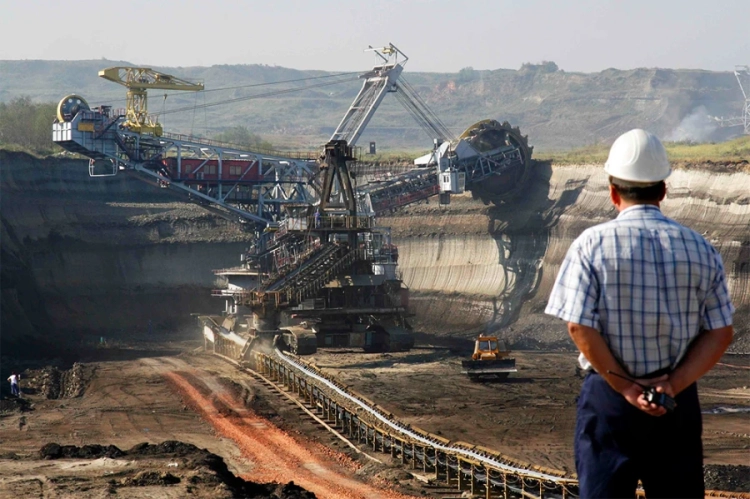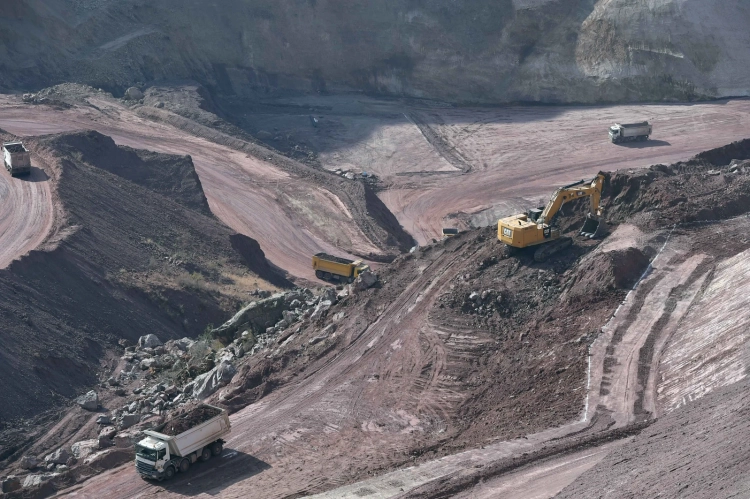
Water resources are surface and groundwater that are suitable for use in a given territory. The...

Nature is the primary source of satisfying the material and spiritual needs of people. Any...

Land resources refer to lands that are systematically used or suitable for use for economic...

In recent years, the concept of natural heritage has increasingly entered analytical research and...
On October 22, an international conference dedicated to wildlife conservation and the development...

Kyrgyzstan is rich in natural resources, with rare metal deposits of gold and sulfur-containing...
A pelican has appeared at the rehabilitation center of the NGO "Bugu-Ene." This was...
In Bishkek, a forum was held dedicated to the International Snow Leopard Day, which is celebrated...

Kyrgyzstan and Its Tourist Resources Tourism in the world is based on the targeted and reasonable...

Even during the time of the Kokand Khanate, the wealth of the subsoil of Kyrgyzstan was well...

It has been noted above that a significant part of the territory of the republic is subject to...

Gypsum reserves are accounted for in six deposits, and extraction is carried out by small...

Tourism in Kyrgyzstan Tourist resources are understood as a set of natural and artificial...

Everything for the Defeat of Fascist Aggressors From the very first days of the war, the efforts...
A raid was conducted in the Alamedin district, organized by inspectors from the Regional...

Over 1,000 deposits registered in the republic Currently, more than 1,000 deposits belonging to 51...

Diversity of Flora in Kyrgyzstan Introduction This work contains a brief description of useful...

As of today, Kyrgyzstan has registered reserves of more than 1,000 deposits belonging to 51 types...

More than twenty years have passed since the publication of the last edition of the Red Book of...

In the Talas region of Kyrgyzstan, new methods for protecting biodiversity are being tested:...
On October 23, an international forum titled "Business, Ecology, and Sports — Ak-Irbis...

Water resources are vital for the economy, humans, and the environment; they are the most...

By the nature of water use, all modern sectors of the economy in the Chui Valley are usually...

Land Resources of Kyrgyzstan The climatic features dictate the development of agricultural sectors...

EXTRACT FROM THE PROTOCOL OF THE MEETING OF THE COUNCIL OF PEOPLE'S COMMISSARS OF THE KYRGYZ...

Kumtor Deposit is a unique site developed by the Canadian company "Centerra Gold Inc.",...

Climatic conditions, along with other factors, determine the characteristics of biological...

People's Experience in Using Natural Resources. The republic has reserves of fossil fuels,...

Therapeutic Resources of Kyrgyzstan Currently, more than 120 natural mineral water springs have...
The Ministry of Nature reported on the results of raids during which citizens engaged in illegal...

The intensive development of industry, transportation, and overpopulation in several areas of the...

Azykova Emilia Kulievna (1935), Doctor of Geographical Sciences (1994)...

In 2018, 436 initiatives for nature protection were approved in Kyrgyzstan In the past year, the...

In the Naryn region, employees of the state natural park "Salkyn-Tor" conducted a...

A forum titled "Business, Ecology, and Sports – Ak-Irbis 2025" is taking place in...

Zhekisheva Sagyn Zhekishevna Doctor of Technical Sciences, Professor, Academician of the...

Dzhamanbaev Akmatbek Sagynovich (1933-1992), Doctor of Technical Sciences (1973), Professor...

Dikikh Anatoliy Nikitovich (1937), Doctor of Geographical Sciences (1998). Russian. Born in...

The fauna of the Chui Valley is part of the Western Tienir-Tous zoogeographic region. According to...

Types of Tourism in Kyrgyzstan Based on the diverse tourism resources available in Kyrgyzstan, the...

A new stage in the study of the history, population, economy, and nature of Kyrgyzstan began after...

Mark Berman shares a simple and accessible way to combat stress Although people have always sought...

As a result of non-tectonic movements, intermountain depressions and mountain uplifts were formed....

Orozobakov Toktosun (1937), Doctor of Technical Sciences (1990), Professor (2000), Laureate of the...

Kyrgyzstan borders Kazakhstan, Uzbekistan, and Tajikistan — friendly states that are close in...

The Republic has a significant amount of diverse fuel and energy resources. Involving them in...

RULES OF DECENCY IN RELATIONSHIPS WITH LIVING NATURE If you didn't grow it, don't take...

From December 1 to 6 of this year, a meeting of the Board of Directors took place in Finland, in...